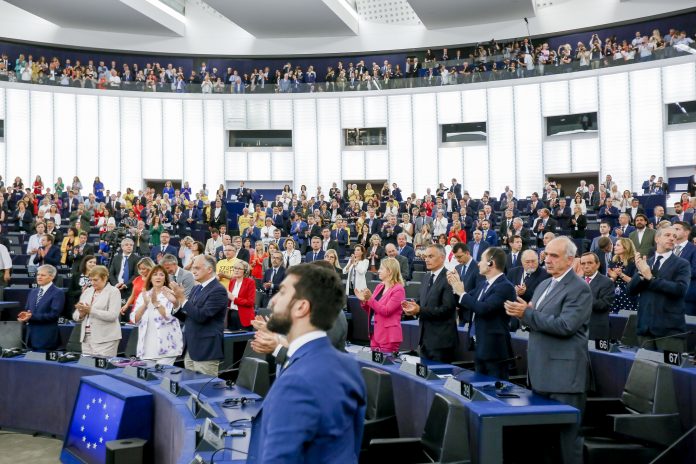On Wednesday, all 14 European Parliament Vice-Presidents were elected in three rounds of voting for a two-and-a-half year term.
Eleven Vice-Presidents were elected in the first ballot, two in the second and the remaining one by a relative majority in the third.
The new EP Vice-Presidents, coming from six political groups and ten member states, are shown below in the order in which they were elected:
Mairead McGuinness (EPP, IE), Pedro Silva Pereira (S&D, PT), Rainer Wieland (EPP, DE), Katarina Barley (S&D, DE), Othmar Karas (EPP, AT), Ewa Bożena Kopacz (EPP, PL), Klara Dobrev (S&D, HU), Dita Charanzová (Renew Europe, CZ), Nicola Beer (Renew Europe, DE), Lívia Járóka (EPP, HU), Heidi Hautala (Greens/EFA, FI), Marcel Kolaja (Greens/EFA, CZ), Dimitrios Papadimoulis (GUE/NGL, EL), Fabio Massimo Castaldo (NI, IT).
Nominations are made on the same basis as for the President (Rule 15). The 14 Vice-Presidents are elected in a single ballot by an absolute majority of votes cast. If there are fewer than 14 successful candidates, a second vote is held to assign the remaining seats under the same conditions. If a third vote is necessary, a simple majority is sufficient to fill the remaining seats. (Rule 17). Vice-Presidents take precedence in the order in which they are elected and, in the event of a tie, by age. If voted by acclamation, a vote by secret ballot determines the order of precedence.
Vice-Presidents can replace the President when necessary, including to chair plenary sittings. They are also members of the European Parliament Bureau, which lays down rules for Parliament’s smooth functioning. Among its other duties, the Bureau draws up Parliament’s preliminary draft budget and decides on administrative, staff and organisational matters.

